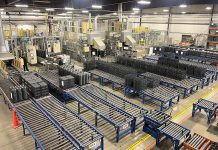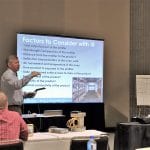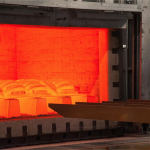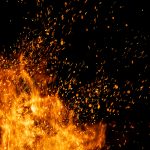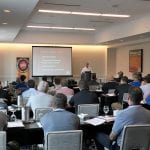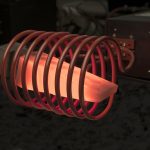Blistering of aluminum during heat treatment
In this column, we will discuss the blistering of aluminum during heat treatment, and methods to prevent its occurrence.
Introduction
High-temperature oxidation, or blistering, often occurs...
2019 annual meeting marks its 90th year
The Industrial Heating Equipment Association will celebrate its 90th anniversary at the 2019 Annual Meeting, April 29-May 1 at Lido Beach Resort in Sarasota,...
Keeping thorough test records key to resolving issues
Record retention is an important part of quality. Quality is tasked with keeping records of periodic tests performed on all equipment used for heat...
World Congress, other conference updates
The ASM Heat Treating Society (HTS) and the International Federation for Heat Treatment and Surface Engineering (IFHTSE) present the highly anticipated 29th IFHTSE World...
Heat treatment of aluminum, part II: Water quenching
In the last article, we talked about the metallurgy behind quenching aluminum. Now we are going to discuss the available quenchants for aluminum.
Introduction
To achieve...
Infrared technology is hot!
The Industrial Heating Equipment Association’s Infrared Equipment Division (IRED) recently completed revisions to its popular Infrared Process Heating Handbook for Industrial Applications. This fundamental...
Heat treatment of aluminum – Part I: Quenching basics
In previous articles, we discussed the role of alloying elements and discussed the solution heat treatment of aluminum. We showed that it is important...
The effect of catalysts on quench oil oxidation
In the last column, I discussed the effect of temperature on the oxidation of a quench oil. As was alluded to in my last...
Q&A with Tom Morrison
When did you make the decision to take FNA virtual?
Our Executive Committee has been meeting weekly since April when COVID-19 really started to take...
IHEA’s Industrial Heating Decarbonization SUMMIT scheduled for October
The Industrial Heating Equipment Association (IHEA) recently announced the Industrial Heating Decarbonization SUMMIT on October 28-30 at the Conrad Indianapolis.
“Forging a Sustainable Path for...
Learn from the best in 2020 and beyond
IRED Education in Atlanta: The Industrial Heating Equipment Association (IHEA) partners with the Chemical Coaters Association International (CCAI), Products Finishing magazine, and Southern Company...
Heat-treating workhorse – integral quench furnace
In this column, we will discuss the workhorse of the steel heat-treating industry – the integral quench furnace.
The integral quench furnace, or sealed quench...
Zoltán Koloszváry appointed honorary president of IFHTSE
For the first time in 30 years, IFHTSE has appointed an honorary president. Honorary presidents have rendered outstanding and continuous service to the Federation...
Thermal expansion of mineral oil quenchants
In this column, I will discuss the thermal expansion of oil. This information is primarily important for initial fills of a quench tank.
Introduction
Oil, when...
Some workpieces are too large and expensive to fit into conventional benchtop hardness testers
Portable Rockwell Hardness Testing of Large Induction Hardened Work Pieces
The previous article identified many factors related to benchtop Rockwell hardness testing practices. This article...
Be attached to process, not results of Nadcap audit
The dreaded Nadcap audit. The daunting AC7102 main checklist with 10 job audits. The strict requirements of AC7102/8 pyrometry adhering to AMS2750. The additional...
The importance of contract review
Within any aspect of our business structure, understanding the specific requirements needed to produce product that conforms to customer requirements is important. These requirements...
Allocating space for case hardening furnaces
When selecting neutral or case hardening furnaces that require pits and have vertically mounted radiant tubes, facility managers must make sure that the equipment...
Hardenability – the influence of tramp elements
Hardenability is the property of a material to deeply harden, and not the ability to get hard . This basic concept has driven much...
Q&A with Rick Diekman
Owner and President of Controlled Thermal Processing, Inc.
IHEA conducts technical seminars in conjunction with Furnaces North America
IHEA conducts technical seminars in conjunction with Furnaces North America
Nonlinear distortion response during gas quenching
High-pressure gas quenching (HPGQ) is touted as a way to reduce distortion of difficult-to-quench geometries. Quench pressures and quench gas flow velocities are chosen...
Q&A with Michael Hager
What’s a typical day like for you at Verder Scientific/Carbolite Gero?
Our office here in North America is primarily focused on sales, technical support, and...
Q&A with Andrew Bassett
How did ATP get started?
During the early 1990s, the National Aerospace and Defense Contractors Accreditation Program (Nadcap) began embracing all special processes, and we...
Employers need to expand on carrot-stick philosophy
We all trade time for money. Gone are the days of bartering, trading your chickens for goats. We go to work to earn a...
Working for the business vs. working on the business
I heard a story once that went something like this:
One day, the owner of a company flies in to the manufacturing site by helicopter,...
Furnace Maintenance
When a heat treat manager or anyone responsible for purchasing heat treating equipment makes a buy decision, they must first consider the process required,...
Heat Treat 2023 and other conference news
Heat Treat 2023, scheduled for October 17-19 in Detroit, Michigan, is co-located with IMAT 2023 and the Motion+Power Technology Expo in Detroit, Michigan, and...
ASTM E18 and Nadcap: Rockwell hardness testing
Rockwell hardness testing is a common way to ensure the material response to heat treat is conforming and is required by applicable industry and...
5th International Conference and more coming in 2023
The 5th International Conference on Heat Treatment and Surface Engineering of Tools and Dies (HTSE-TD), sponsored by the Chinese Heat Treating Association, will be...
Ambrell has been all about induction heating since 1986
Established in 1986, the Rochester, New York-based IHEA member manufactures a range of induction heating solutions. The company has steadily grown from a small...
Mark your calendars for these important 2022 conferences
European Conference on Heat Treatment/IFHTSE 27th Congress
September 5-8, 2022 | Salzburg, Austria
At the present time, more than 90 authors from 22 countries have provided...
The IHEA calendar heats up
New — Sustainability Webinar Series: IHEA’s new webinar series will focus on carbon producing heating processes and provide methods to optimize their efficiency and...
Q&A with Mike Loepke
What is Qmulus, and why did Nitrex feel the need to develop it?
Qmulus is a holistic IOT solution with the aim to facilitate and...
Thermal Process Modeling
Thermal process modeling has been a hot topic in the heat treating community over the past few years. The project conducted by ASM International...
Salzburg conference to commemorate IFHTSE’s 50th year
The 27th IFHTSE Congress will be in Salzburg, Austria, September 5-8, 2022. This is going to be a very special event, as it will...
Materials Selection for Induction Hardening Processes
Induction hardening is the most common technique of the various types of applied energy processing. It uses alternating current that induces a magnetic field...
Q&A with Kenny Miller
Tell us about Kinematics.
For nearly three decades, Kinematics has delivered customized, robust solutions to customers with mission-critical applications. With a variety of motion-control solutions,...
Hardening power: A measure of quenching performance
In this column, we will discuss the Segerberg Hardening Power (HP) for polymer quenchants.
When comparing polymer quenchants, there are several things that we look...
Variation in steel hardenability
Many heat-treating processes cannot tolerate appreciable variations in steel hardenability. For an established in-control process, deviations in chemical composition and starting microstructure may result...


